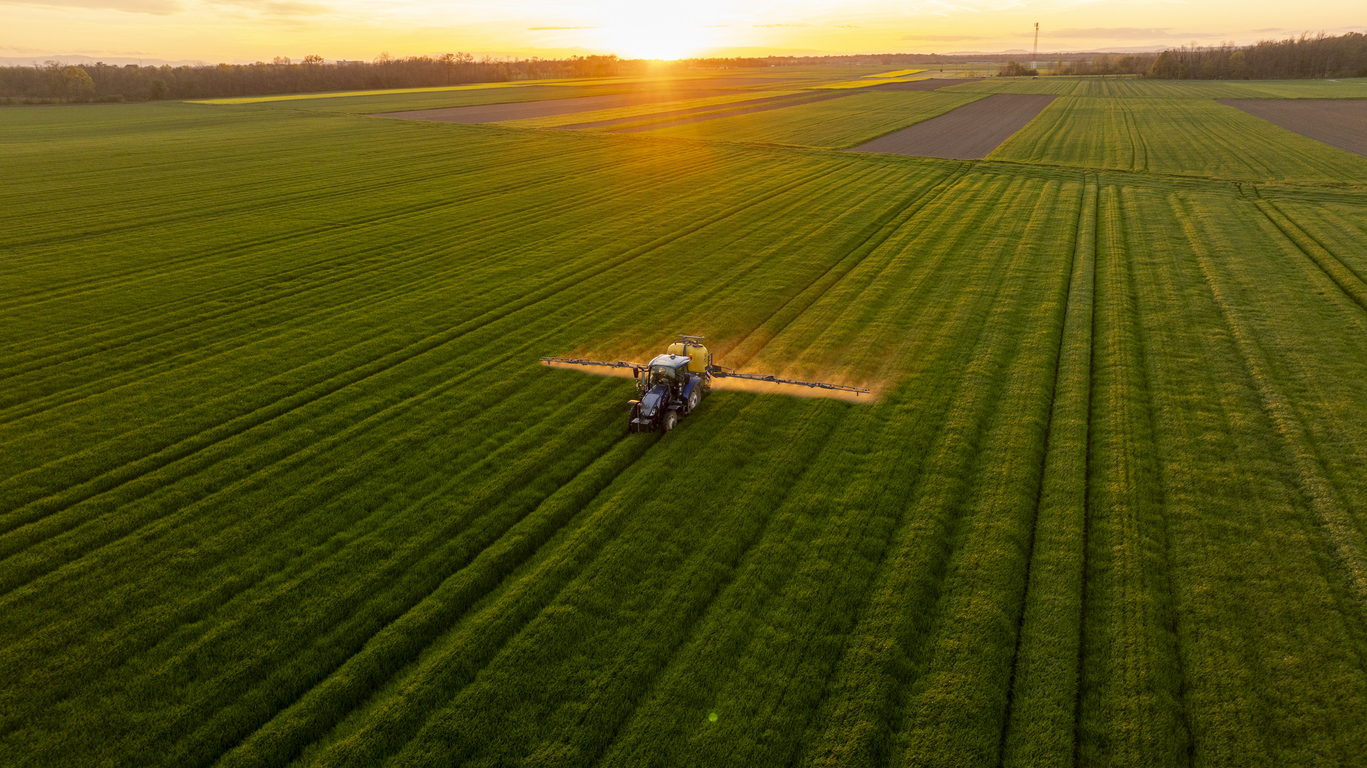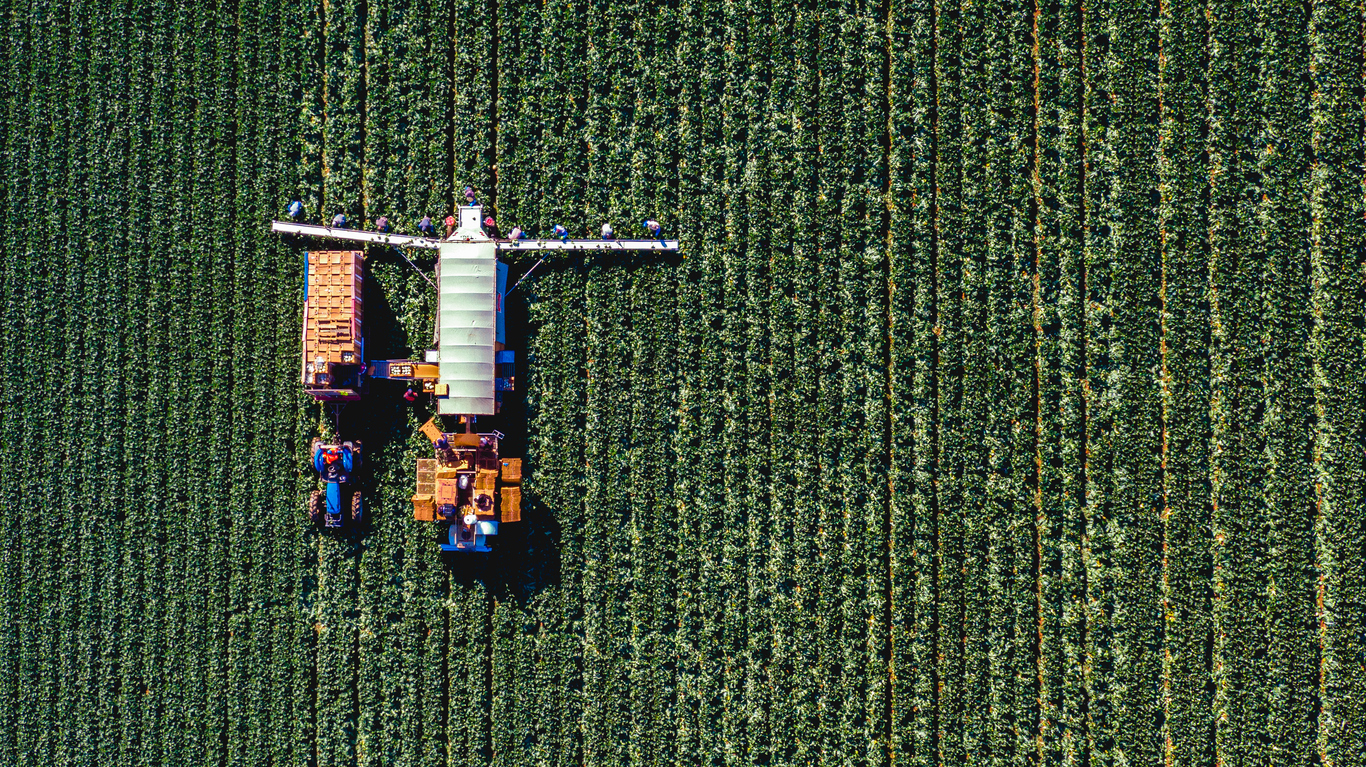By Gregg Wartgow, Special to AEM —
AEM has re-released its breakthrough study on precision agriculture.
Originally published in 2021, The Benefits of Precision Ag in the United States now includes updated field data and first-hand farmer insights on how precision ag technologies are helping to improve crop yields, reduce inputs, and strengthen the resiliency of America’s food supply chain.
“We wanted to make this study something people from outside the agricultural industry could relate to,” said Doug Griffin, Partner at AEM member company Kearney, a global consultancy firm that developed the report. “For agriculture professionals, some of the information may seem obvious at times. But for others, including policymakers, it’s not.”
The report, which can be viewed and downloaded on AEM.org’s Insights page, details how precision agriculture has been helping farmers produce more crops on less land, all while reducing usage of water, fertilizer, herbicides, and fuel. It’s important for policymakers and the general public to understand that because farming practices often come under undue scrutiny that isn’t rooted in science.
AEM developed The Benefits of Precision Ag in the United States in collaboration with the American Farm Bureau Federation, American Soybean Association, CropLife America, and the National Corn Growers Association. Griffin was joined by representatives from those organizations during an AEM Member Education webinar on Oct. 16.
“The evidence presented in this report helps show that these technologies don’t just make sense environmentally; they make economic sense as well,” said Carson Fort, government affairs manager at the American Soybean Association. “This is especially important at a time when growers face significant headwinds. The farm economy remains difficult, input costs are high, markets are volatile, and new challenges like the Make America Healthy Again (MAHA) Commission have adding additional uncertainty.”
“We wanted to make this study something people from outside the agricultural industry could relate to. For agriculture professionals, some of the information may seem obvious at times. But for others, including policymakers, it’s not.” -- Doug Griffin
Key Findings
The report focuses on five key areas of precision ag technology:
- auto guidance
- machine section control
- variable rate application
- fleet analytics and telematics
- precision irrigation
Analysis of data generated over the past couple of decades helps cement the notion that farmers have been producing more with less, thanks to precision ag technologies:
- Annual crop production up 5%
- Water use down 5%
- Fuel use down 7%
- Fertilizer use down 8%
- Herbicide use down 9%
Keep in mind that these significant gains have occurred with relatively low technology adoption across the industry. To that point, the report also forecasts the additional gains that could be realized as a result of more widespread adoption:
- Annual crop production up another 6%
- Water use down another 20%
- Fuel use down another 7%
- Fertilizer use down another 14%
- Herbicide use down another 12%
New Data on Emerging Spray Technologies
An exciting addition to the re-released report is fresh data showing the positive impact of targeted spray technology, which is where a sprayer only turns on when weeds are detected. Griffin said this is an emerging area of precision ag that is garnering a lot of interest—and for good reason.
“The general public must understand that the battle against weeds has been going on since the early days of farming,” Griffin said. “Now with precision technologies, we can see significant impacts to the way weeds are controlled in production agriculture.”
Case study data suggests that herbicide use could be reduced anywhere from 50-90% depending on factors such as crop, location, application timing window, and weed pressure.
One corn/soybean farmer from Minnesota had the following to say when interviewed for the report: “We looked at what we were spending on postemergence weed control and felt we could justify (targeted spray application technology) if we sprayed only 50% of our acres post. In the end, we only sprayed 11% of our corn acres with postemergence herbicide and averaged only spraying 20% of our soybeans with both applications.”
Generally speaking, the report states that near-full adoption of targeted spray technology could result in a 55% reduction in herbicide use across the row crop industry. To put that into perspective, all of that saved herbicide would be enough to fill roughly 12,000 railcars. That helps put a lot more money into farmers’ pockets, while also reducing the environmental impact of their spraying operations.
“The evidence presented in this report helps show that these technologies don’t just make sense environmentally; they make economic sense as well.” -- Carson Fort
Precision Ag’s Potential Hinges on Consistent Messaging
Regardless of which area of precision ag you’re talking about, the report states that access to rural broadband, improved financing, and demonstrating ROI with data will help drive adoption.
“We believe there are opportunities with the data in this report, particularly when having conversations with policymakers, to get people really excited about the additional savings that are out there as a result of precision agriculture practices,” Griffin said.
There is also an opportunity to get more farmers excited. Consider the following:
- 5% increase in crop production can help a 1,000-acre row crop farmer earn another $66,000 in revenue
- Optimized fertilizer use can help reduce cost by as much as $20,000 on 1,000 acres
- Optimized herbicide use can help reduce cost by as much as $12,000 on 1,000 acres
Many other examples like that are highlighted in the report. Additionally, data is presented to help put these savings into a context that applies to society as a whole. Using the right messaging in a consistent way will be key to garnering buy-in from the general public and policymakers, which will be key to any further adoption of these technologies by farmers across the country.
For example, by increasing productivity and crop yields by 5%, farmers can avoid planting more than 11 million acres of land. That’s equivalent to five Yellowstone National Parks. By reducing water use by 25%, enough water would be saved to fill 824,000 Olympic swimming pools. In other words, precision agriculture allows farmers to produce more with less, helping to preserve vital natural resources while securing our equally vital food supply.
Conversations like these are especially important for the pesticide industry.
“It’s no surprise that the pesticide industry was squarely under the crosshairs of the MAHA Commission’s work,” said Jeff Blackwood, vice president of government relations at CropLife America, an association of pesticide industry stakeholders including manufacturers and distributors. “We took issue with some of that. But we have had a lot of engagement with MAHA Commission members and have opened up a real dialogue. We sought areas of agreement where we could find common ground. We offered 16 policy recommendations, one of which was leaning into precision agriculture and the technologies that enable it.”
Other AEM partners have also been encouraged by a change in attitude amongst the MAHA movement.
“This updated report has been very timely and topical as the MAHA Commission expressed strong interest in the role precision agriculture could play in advancing productivity and sustainability, and overall resulting in healthy outcomes,” said Colleen Willard, director of public policy, production, and sustainability at the National Corn Growers Association.
Willard also said the report has helped MAHA policymakers better understand the value of pesticides in food production, as well as the role technology is playing in reducing the use of pesticides and unintended, off-target exposure.
“The initial assessment put out by the MAHA Commission questioned the safety of glyphosate and atrazine, specifically their role in childhood chronic diseases,” Willard pointed out. “But the next iteration of their report pivoted to a focus on precision agriculture incentives and investment for faster development and wider adoption. The MAHA report, in my opinion, was a huge win for the ag industry.”
Brian Glenn, Director of Government Affairs at the American Farm Bureau Federation, couldn’t agree more.
“We are definitely strong together,” Glenn said. “Our collaboration on this report has led to real positive momentum on Capital Hill and with the Administration, and it’s based on sound science-based policy to support precision agriculture technology. The MAHA report that came out in September had recommendations on precision ag, and the MAHA Caucus on Capital Hill has latched onto legislation that supports the adoption of precision ag technology. That’s a testament to our collective effort.”
The updated study is available now on AEM’s Insights page: www.aem.org/insights.





